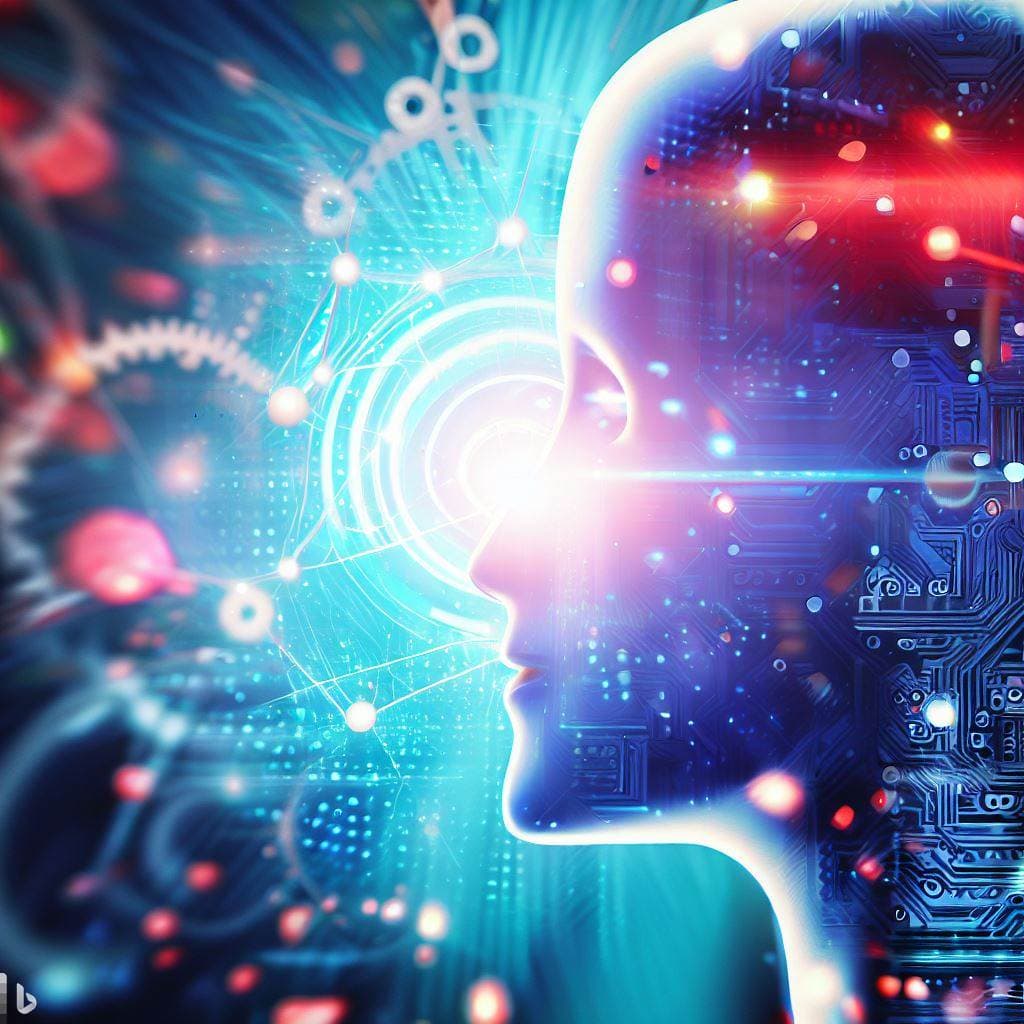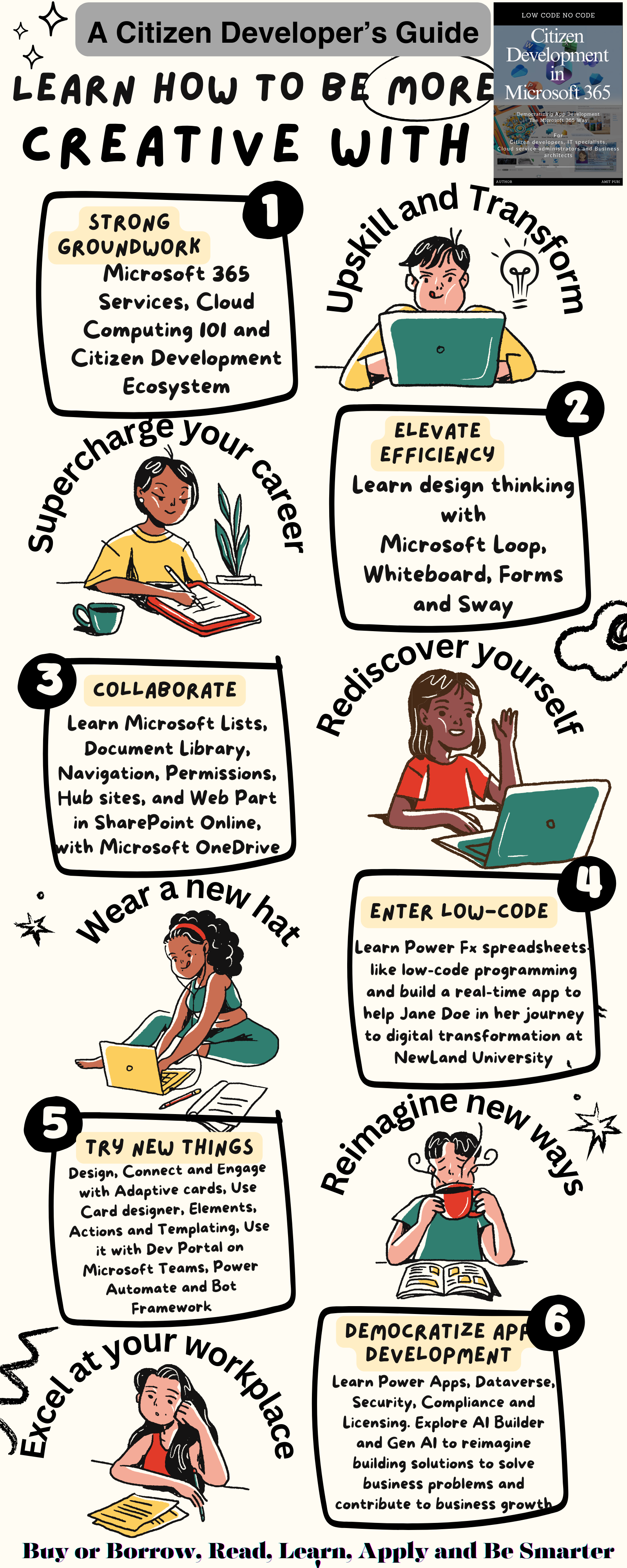By harnessing the power of large language models, develop innovative apps that serve as transformative facades, breathing new life into your existing applications and delivering unparalleled user experiences.
Large Language Models (LLMs) are at the forefront of a linguistic revolution, reshaping the way we interact with technology and information. These advanced AI models, trained on vast amounts of textual data, have the unparalleled ability to understand context, generate coherent content, and assist users in a myriad of tasks. From drafting emails to creating literary pieces, LLMs are empowering creativity by providing tools that augment human capabilities. As we integrate LLM-based apps into our daily lives, we’re not just harnessing the power of AI; we’re redefining the boundaries of human-machine collaboration, setting the stage for a future where language is not just communicated but co-created.
The Building Blocks of Generative AI: A Comprehensive Overview
Generative AI has been making waves in the tech industry, and for a good reason. It has the potential to revolutionize various sectors, from content creation to healthcare. In this article, we’ll delve deep into the building blocks of Generative AI, using insights from Jonathan Shriftman’s article on Medium.
1. Introduction to Generative AI
Generative AI is a subset of artificial intelligence that focuses on creating new content. This could be in the form of text, images, music, or any other form of data. The article emphasizes the rapid advancements in the foundational components of generative solutions. These advancements are not just in terms of technology but also in venture investment.
2. Large Language & Foundational Models
Large Language Models (LLMs) are computer programs trained using vast amounts of text and code. Their primary goal is to understand the meaning of words and phrases and generate new sentences. These models, also known as foundation models, form the basis for various applications. They use vast datasets to learn and, while they might make occasional errors, their efficiency is continually improving.
3. Semiconductors, Chips, and Cloud Hosting
Generative AI models require powerful computational resources. GPUs and TPUs, specialized chips, form the base of the Generative AI infrastructure stack. Cloud platforms like AWS, Microsoft Azure, and Google Cloud provide the necessary resources for training and deploying these models.
4. Orchestration Layer / Application Frameworks
Application frameworks help in the seamless integration of AI models with different data sources. They speed up the prototyping and use of Generative AI models. LangChain and Fixie AI are notable companies in this domain.
5. Vector Databases
Vector databases store data in a way that facilitates finding similar data. They represent each data piece as a vector, a list of numbers corresponding to the data’s features. Pinecone, Chroma, and Weaviate are some of the companies that have developed vector databases.
6. Fine-Tuning
Fine-tuning involves further training a model on a specific task or dataset to enhance its performance. It’s like refining an athlete’s skills for a particular sport. Weights and Bias is a notable company in this field.
7. Labeling
Data labeling is crucial for generative AI models. It involves providing labels to teach the machine learning model. Snorkel AI and Labelbox are leading companies in this domain.
8. Synthetic Data
Synthetic data is artificially created data that mimics real data. It’s used when real data is unavailable or cannot be used.
Conclusion
Generative AI holds immense potential. Its foundational components are rapidly evolving, and keeping up with these advancements is essential for anyone interested in the field. By understanding its building blocks, we can better appreciate its capabilities and the future it promises.
Note: For a deeper understanding and more insights, you can read the full article by Jonathan Shriftman here.
There are several tools, libraries, and frameworks that can be used to develop Language Model (LLM) applications, enabling you to leverage the power of natural language processing and generation. Here are some popular ones:
-
Hugging Face Transformers: A widely-used library that provides pre-trained models for various NLP tasks, including LLMs like GPT-3. It offers an easy-to-use API for text generation, translation, summarization, and more.
-
LLM Models API: OpenAI’s GPT-4 DALL·E 2 API, PaLM API, Vertex AI, and Llama 2 Together API enable developers to seamlessly integrate Text and Chat Completion or Fine-tuning models, along with Image generation, edits, and variations, into their applications. These tools empower tasks such as generating text, answering questions, code generation, and unlocking creative possibilities—ranging from image generation to editing and producing limitless variations and beyond.
-
spaCy: A powerful NLP library that offers tools for natural language understanding, tokenization, part-of-speech tagging, named entity recognition, and more.
-
NLTK (Natural Language Toolkit): A comprehensive library for NLP tasks, NLTK provides tools for text processing, tokenization, stemming, tagging, parsing, and more.
-
Stanford NLP: A suite of NLP tools developed by Stanford University, offering tools for part-of-speech tagging, named entity recognition, dependency parsing, and more.
-
TextBlob: A simple and easy-to-use NLP library built on top of NLTK and Pattern libraries. It offers tools for common NLP tasks like sentiment analysis, tokenization, and translation.
-
BERT (Bidirectional Encoder Representations from Transformers): A pre-trained transformer model by Google that is widely used for tasks like text classification, sentiment analysis, and more.
-
FastText: A library for text classification and word embedding created by Facebook’s AI Research lab.
-
Spacy-Transformers: An extension to spaCy that allows for seamless integration of transformer-based models like BERT and GPT-2.
-
AllenNLP: An open-source NLP research library built on PyTorch, offering tools for text processing, machine translation, semantic role labeling, and more.
These tools and frameworks provide developers with the resources they need to build powerful and efficient LLM applications, enabling tasks ranging from simple text generation to complex natural language understanding and processing tasks.
LangChain: Revolutionizing Multilingual Content Creation and Translation
LangChain is a pioneering platform transforming the landscape of multilingual content creation and translation. With a vision to bridge language barriers and enable seamless communication, LangChain harnesses the power of AI and blockchain technology. This innovative synergy allows users to create, translate, and share content across languages with unprecedented efficiency and accuracy. LangChain’s decentralized approach ensures data security and privacy, while AI-driven algorithms guarantee high-quality translations. Whether you’re a content creator, business owner, or individual seeking to connect with a global audience, LangChain empowers you to break down linguistic barriers and foster meaningful connections in the ever-expanding digital world.
LangSmith: Crafting Language Solutions with AI Precision
LangSmith is a pioneering platform that specializes in harnessing the capabilities of artificial intelligence to offer innovative language solutions. With a commitment to transforming how we interact with and understand languages, LangSmith leverages cutting-edge AI algorithms to provide services like language translation, text generation, and sentiment analysis. Its advanced natural language processing techniques ensure accurate and contextually relevant outcomes, whether it’s converting content between languages or extracting insights from textual data. LangSmith’s dedication to delivering language solutions that exceed expectations makes it a valuable resource for businesses, researchers, and individuals seeking to harness the power of AI for improved language-related tasks.
Semantic Kernel: Empower Your Apps with Seamless AI Integration: Unleash the Potential of Semantic Kernel!
The Semantic Kernel is an open-source software development kit (SDK) that seamlessly merges AI services like OpenAI, Azure OpenAI, and Hugging Face with traditional programming languages like C# and Python. This integration empowers you to craft AI applications that harness the strengths of both domains, resulting in a harmonious synergy of capabilities.
LlamaIndex - Data Framework for LLM Applications
LlamaIndex is a cutting-edge data framework designed to seamlessly connect custom data sources to large language models (LLMs). Its primary objective is to harness the power of LLMs over diverse data sets. The platform offers a range of tools that facilitate data ingestion, allowing users to integrate various data sources and formats, such as APIs, PDFs, documents, and SQL, with large language model applications. Additionally, LlamaIndex provides data indexing capabilities to store and categorize data for different applications, integrating with downstream vector stores and database providers. One of its standout features is the query interface, which accepts any input prompt over the data and delivers a knowledge-augmented response. This framework is instrumental in building robust end-user applications, including Document Q&A for unstructured data, data-augmented chatbots, knowledge agents, and structured analytics using natural language queries.
Writing Language Model (LLM)-based apps involve leveraging the power of AI to create applications that can understand, generate, and retrieve text-based content. Here’s a step-by-step guide on how to achieve this:
-
Understand the Concepts: Familiarize yourself with key concepts like Language Models (such as GPT-3), vector databases (like Elasticsearch), and RAG (Retrieval-Augmented Generation). Understand how LLMs can generate human-like text, vector databases can efficiently store and retrieve information, and RAG can combine both techniques for enhanced results.
-
Select the Right Tools: Choose the appropriate LLM API for your app (like OpenAI’s GPT-3 API), a suitable vector database (such as Elasticsearch), and tools for implementing RAG (like Hugging Face Transformers library).
-
Design Your App: Determine the purpose of your app. Whether it’s content recommendation, chatbots, knowledge retrieval, or content creation, define the scope and goals of your LLM-based app.
-
Collect and Prepare Data: Gather relevant data that your app will need. This could include user queries, reference texts, or any other content that the app will interact with. Clean and preprocess the data as required.
-
Integrate Vector Database: Set up and configure your chosen vector database. Index the prepared data into the vector database to enable efficient searching and retrieval.
-
Develop LLM-based Models: Utilize LLM APIs to create models that can generate text based on user prompts. Train or fine-tune your model if necessary to align it with your app’s objectives.
-
Implement RAG: Use RAG techniques to combine the LLM with the vector database. This involves retrieving relevant information from the vector database using user queries and incorporating that information into the generated text from the LLM.
-
Develop User Interface: Design the user interface of your app to take user inputs and display outputs. Implement the integration of LLM-based text generation and RAG-enhanced responses.
-
Test and Iterate: Test your app thoroughly to ensure that the LLM-based text generation, retrieval from the vector database, and RAG integration are functioning as expected. Gather user feedback and iterate on your app’s design and functionality.
-
Optimize and Deploy: Optimize your app’s performance and user experience. Ensure that the vector database queries and LLM-based responses are fast and accurate. Once satisfied, deploy your app to your desired platform.
-
Monitor and Maintain: Regularly monitor your app’s performance, user engagement, and any issues that arise. Update and maintain your app as needed to incorporate improvements and new features.
Use Case of Vector Database
A vector database is a specialized type of database designed to handle high-dimensional data, particularly in the form of vectors. These vectors are mathematical representations of data points in a multi-dimensional space. The primary advantage of a vector database is its ability to perform similarity searches, where the goal is to find vectors that are close to a given query vector in the multi-dimensional space.
Example Applications
The utility of vector databases can be best understood through practical applications. Here are two examples that demonstrate how to use sizing guidelines to choose the appropriate type, size, and number of pods for indexing:
Example 1: Semantic Search of News Articles
-
Scenario: In this example, we are using a demo app for semantic search as referenced in the documentation. The goal is to search for news articles based on their semantic meaning rather than just keyword matching.
-
Data Size and Dimensions: The application works with 204,135 vectors, where each vector has 300 dimensions. This is well below the general measure of 768 dimensions.
-
Sizing Decision: Given the rule of thumb that up to 1M vectors can be accommodated per p1 pod, this application can run efficiently with just a single p1.x1 pod.
Example 2: Facial Recognition for Banking Security
-
Scenario: This example involves building a facial recognition system for a banking app. The aim is to securely identify customers, ensuring that the person accessing the app is indeed the legitimate user.
-
Data Size and Dimensions: The application is designed for 100M customers, and each face is represented by a vector with 2048 dimensions. This high dimensionality ensures greater accuracy in facial recognition, especially crucial for financial security.
-
Sizing Decision:
- Using the rule of thumb, 1M vectors with 768 dimensions fit in a p1.x1 pod. To determine the number of pods required:
- 100M customers divided by 1M gives 100 base p1 pods.
- The vector ratio is 2048 dimensions divided by 768, which equals 2.667.
- Multiplying the vector ratio by the base number of pods (2.667 * 100), we get 267 pods (rounded up).
- To optimize storage and latency, we can switch to s1 pods, which have five times the storage capacity of p1.x1 pods. So, 267 pods divided by 5 gives 54 pods (rounded up).
Thus, for this high-security application, we would need an estimated 54 s1.x1 pods to store the high-dimensional data representing each customer’s face.
- Using the rule of thumb, 1M vectors with 768 dimensions fit in a p1.x1 pod. To determine the number of pods required:
Vector databases offer a powerful solution for applications that require similarity searches in high-dimensional spaces. By understanding the data’s size and dimensionality, one can make informed decisions about the type and number of pods required for optimal performance. Whether it’s searching for semantically similar news articles or ensuring secure facial recognition for banking, vector databases provide the necessary infrastructure for efficient and accurate results.
RAG (Retrieval-Augmented Generation)
RAG is an abbreviation for Retrieval-Augmented Generation, a method that combines the strengths of large-scale pre-trained language models with external retrieval or search mechanisms. The primary goal of RAG is to enhance the capabilities of generative models by allowing them to pull relevant information from vast external sources, such as databases or corpora, during the generation process.
In the realm of artificial intelligence, large language models (LLMs) have made significant strides, offering impressive results in various tasks. However, they are not without their flaws. Marina Danilevsky, a Senior Research Scientist at IBM Research, introduces us to a framework designed to enhance the accuracy and relevance of LLMs: Retrieval-Augmented Generation, or RAG.
Watch on YouTube in IBM Technology channel
At its core, the “Generation” in RAG refers to LLMs that produce text in response to a user’s query, known as a prompt. While these models can generate impressive results, they can sometimes provide outdated or unsourced information. For instance, if one were to ask about the planet with the most moons in our solar system, an outdated model might confidently state “Jupiter,” even if newer data suggests otherwise.
The “Retrieval-Augmented” component of RAG aims to address these shortcomings. Instead of solely relying on the LLM’s training data, RAG introduces a content store, which can be an open source like the internet or a closed collection of documents. When a user poses a question, the LLM first consults this content store to retrieve the most relevant and up-to-date information before generating a response.
In practice, this means that when a user prompts the LLM with a question, the model doesn’t immediately respond. Instead, it first retrieves pertinent content, combines it with the user’s query, and then formulates a response. This approach not only ensures that the answer is grounded in current data but also allows the model to provide evidence for its response.
Addressing LLM Challenges with RAG
RAG effectively tackles two primary challenges associated with LLMs:
Outdated Information: Instead of continuously retraining the model with new data, one can simply update the content store with the latest information. This ensures that the model always has access to the most recent data when generating a response.
Lack of Sourcing: By instructing the LLM to consult primary source data before responding, RAG reduces the likelihood of the model providing unsourced or fabricated answers. This approach also enables the model to recognize when it doesn’t have enough information to answer a query, allowing it to respond with “I don’t know” rather than potentially misleading the user.
However, the effectiveness of RAG is contingent on the quality of the retriever. If the retriever fails to provide high-quality grounding information, the LLM might not be able to answer a user’s query, even if it’s answerable.
Components of RAG:
-
Retriever: This component is responsible for searching and fetching relevant documents or passages from a large corpus based on a given query. The retriever uses dense vector representations of the documents and the query to find the most relevant matches. Techniques like Dense Passage Retrieval (DPR) are commonly used for this purpose.
-
Generator: Once the relevant passages are retrieved, they are provided as context to a generative model, which then produces a coherent and contextually relevant response. Transformers, especially models like BERT or GPT, are typically used as the generator.
How RAG Works:
-
Query Input: The process begins with a user query or question.
-
Retrieval: The retriever searches the corpus for relevant passages or documents based on the query. It returns a fixed number of top matches.
-
Generation: The retrieved passages, along with the original query, are fed into the generative model. The model then produces a response that takes into account both the query and the information from the retrieved passages.
Advantages of RAG:
-
Scalability: RAG can leverage vast external knowledge sources without needing to have all that information within the model parameters. This allows the model to be more scalable and adaptable to different domains.
-
Accuracy: By pulling in external information, RAG can provide more accurate and contextually relevant answers, especially for questions that require specific factual knowledge.
-
Flexibility: The retrieval mechanism can be fine-tuned or adapted to different corpora, making RAG versatile for various applications.
Applications of RAG:
-
Question Answering: RAG can be used to build systems that answer questions based on large corpora, like Wikipedia or scientific papers.
-
Content Generation: RAG can generate content that requires referencing external sources, such as writing essays or reports.
-
Conversational AI: In chatbots or virtual assistants, RAG can pull in relevant information from external sources to provide richer and more informative responses.
RAG represents a significant step forward in the realm of generative models by bridging the gap between retrieval-based and generation-based approaches. By combining the strengths of both methods, RAG offers a powerful tool for a wide range of natural language processing tasks, especially those that benefit from external knowledge retrieval.
By combining the capabilities of Language Models, vector databases, and RAG techniques, you can create powerful applications that provide contextually relevant and engaging text-based interactions for users.
Retrieval-Augmented Generation offers a promising solution to some of the challenges faced by large language models. By grounding responses in up-to-date, sourced information, RAG ensures that users receive accurate and trustworthy answers to their queries. As research in this area continues, we can expect even more refined and effective implementations of this framework in the future.
Further Reference
- LangChain Cheat Sheet @ KDnuggets
- Retrieval-Augmented Generation for Knowledge-Intensive NLP Tasks
- Constructing knowledge graphs from text using OpenAI functions: Leveraging knowledge graphs to power LangChain Applications
- Constructing knowledge graphs from text using OpenAI functions
- Security-Driven Development with OWASP Top 10 for LLM Applications






Comments